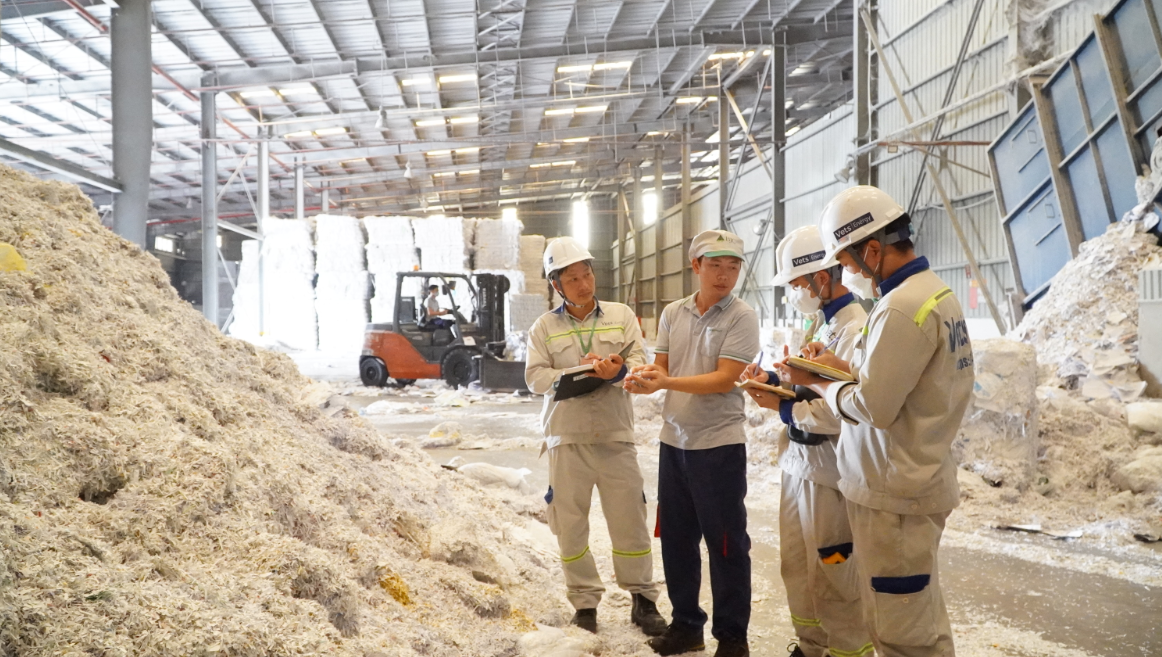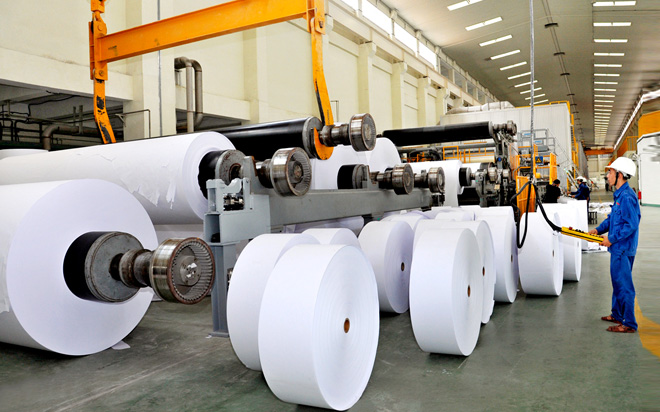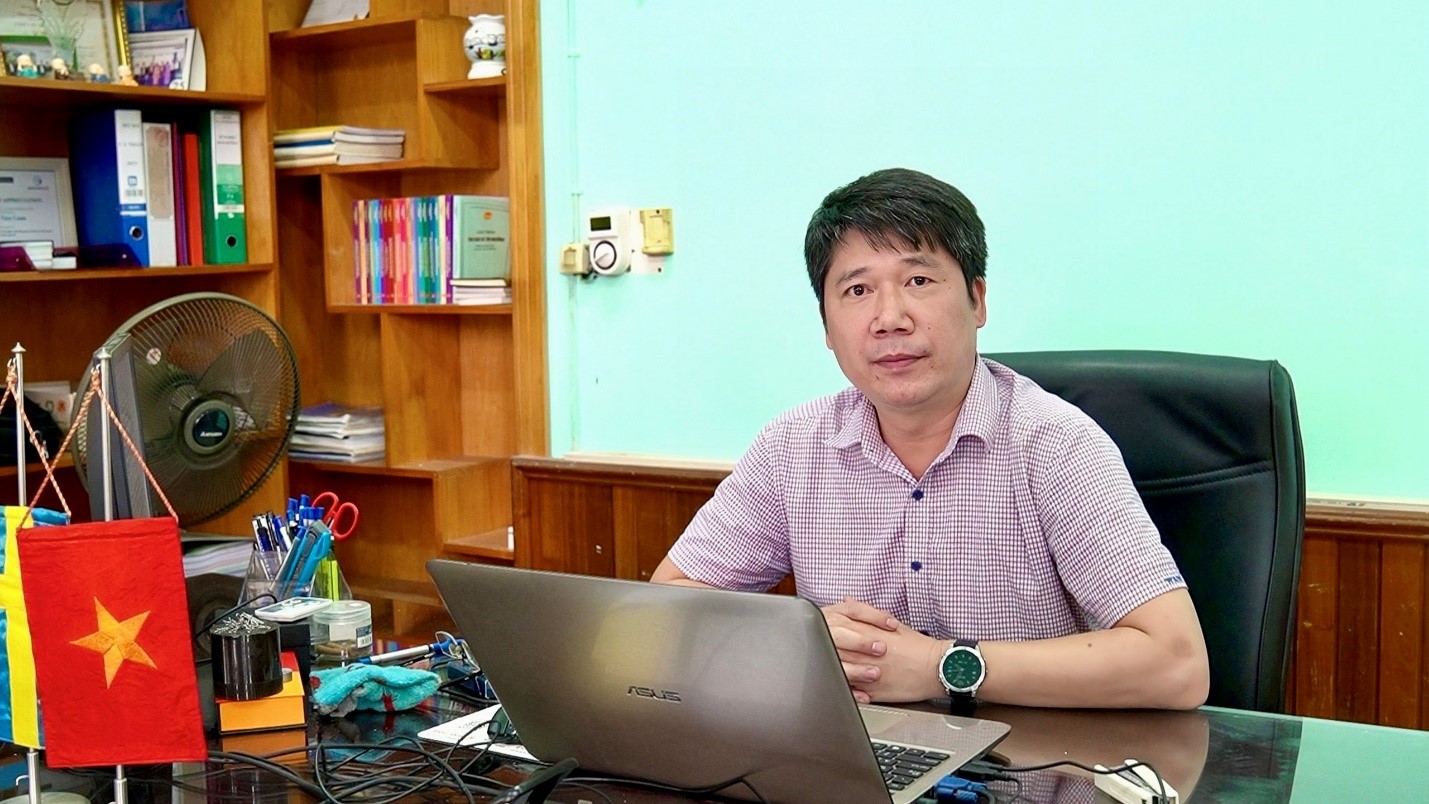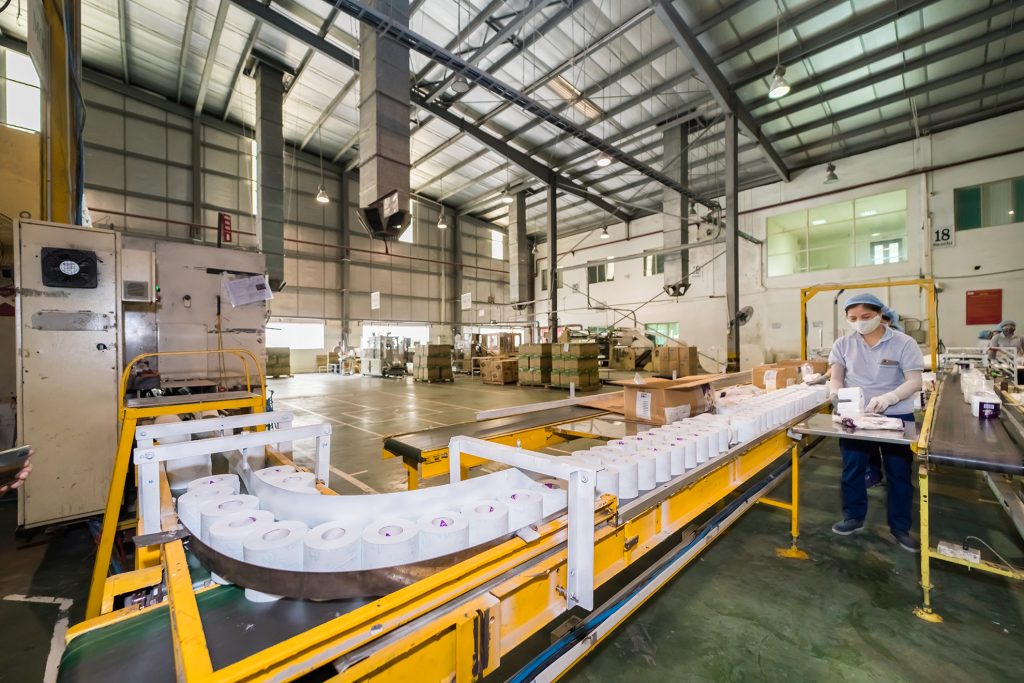The paper industry is one of the five largest energy consumers worldwide, with energy consumption making up 4% of global energy use annually. Given its high energy consumption, reducing fuel usage presents significant challenges.
A survey conducted by the Vietnam Paper Corporation (Vinapaco) highlighted that energy costs constitute 20-30% of production costs in the paper and pulp industry. With over 500 paper manufacturing enterprises growing at an annual rate of 15-18%, energy demand in the paper industry is expected to increase rapidly in the coming years. Experts see great potential for energy savings in this sector.
The paper industry is one of the high-energy-consuming sectors.
Vinapaco is a pioneer enterprise that has adopted advanced technologies to reduce energy use.
Mr. Ngo Tien Luan, Head of Vinapaco's Technical Department, shared several initiatives the company has implemented to save energy. At the paper mill's pulp workshop, Vinapaco replaced four old, damaged heat exchangers to reduce steam consumption. The company also halted unnecessary stirring equipment to save electricity, insulated damaged pipes, and reused hot condensate water for pulp washing to cut down on steam used for heating water. In the paper workshop, Vinapaco installed inverters for the agitator motors and pulp beater to adjust engine speed. The company also replaced the suction fan and high-pressure pump motors with lower-power models to conserve energy and switched over large motors exceeding the load rating to more suitable motors, ensuring optimal energy use.
Vinapaco Invests in Modern Technology for Paper Production.
At the power plant, the company has focused on load balancing, merging loads, and replacing underloaded transformers with smaller ones to improve power factor. In addition, inverters were installed on motors with variable loads (such as agitators and pumps), and old heat exchangers were reused. Hot condensate from the distillation system was repurposed to preheat boiler feedwater. Adjustable air dampers were also installed on smoke and air fans in the power boilers, enhancing combustion efficiency.
At the chemical plant, Vinapaco recovered heat of used water to cool chlorine in the drying area, using this energy to operate the hot water system in the chlorine vaporization area.
To further improve energy efficiency, Vinapaco has established an energy management system following ISO 50001:2018 standards.
Mr. Ngo Tien Luan, Head of Vinapaco's Technical Department.
Mr. Ngo Tien Luan, Head of Vinapaco's Technical Department, shared that these energy-saving measures have helped the company reduce energy consumption from 15,467 MJ/ton of paper in 2020 to 12,623 MJ/ton in 2023, which is 7.5% lower than the energy consumption benchmark set by the Ministry of Industry and Trade in Circular No. 24/2017/TT-BCT, issued on November 23, 2017.
Vina Paper, another company in the sector, has also benefited significantly from energy-saving initiatives.
Recognizing the importance of efficient energy use, Vina Paper has implemented a range of integrated solutions, from management to technical upgrades, to optimize production processes and minimize environmental impact.
The company operates one of Vietnam's most advanced paper production lines from Italy.
Mr. Nguyen Thanh Cuong, the Technical Manager at Vina Paper, shared that the company has established an Energy Management Board and developed a comprehensive energy usage policy. This team regularly monitors energy consumption across all production systems, evaluates the installation of new equipment, and reports energy use quarterly. They are also responsible for developing and executing energy-saving plans.
In addition to its robust management system, Vina Paper has adopted advanced technical solutions to enhance energy efficiency. The company has installed inverters across various production equipment, including water supply systems, air compressors, and boiler feedwater systems. The inverters in the boiler area have proven particularly effective in reducing energy consumption. For example, the frequency of the oxygen and exhaust fans in the boiler was reduced from a constant 50 Hz to between 10–15 Hz after inverter installation, resulting in significant energy savings.
Inverter system of boiler area at Vina Paper factory.
The company also installed a preheater double the normal size to maintain boiler feedwater at approximately 140°C, improving boiler energy efficiency. Moreover, a condensate recovery system was installed, allowing 80% of the needed water to be recycled and preheated for the boiler.
In terms of further energy savings, Vina Paper replaced a 30 kW pump with a more efficient 2.2 kW pump with a frequency inverter to supply water to the boiler, significantly reducing energy consumption.
Thanks to the company's commitment to continuous innovation and every employee's dedication to energy efficiency, the energy consumption per ton of paper has steadily decreased. In 2021, Vina Paper reduced energy consumption per ton of paper by 8.3% compared to 2020, and in 2022, the figure dropped by another 5.1% compared to 2021.
According to Mr. Cuong, while the industry benchmark for energy consumption is 14,572 MJ/ton of paper, Vina Paper's energy consumption in 2021 was 12,156.6 MJ/ton (2,415.4 MJ lower), and in 2022, it was reduced further to 11,534.4 MJ/ton (3,037.6 MJ lower).

Vina Paper strives to reduce energy consumption per ton of finished paper.
Energy saving is an activity that brings long-term benefits to enterprises. The continuous efforts of Vinapaco and Vina Paper in energy efficiency and conservation not only provide economic advantages for the companies but also play a crucial role in the sustainable development of Vietnam's paper industry.
Duc Do

.jpg)












 Enhancing capacity to develop and implement energy efficiency policies at local level
Enhancing capacity to develop and implement energy efficiency policies at local level
 Bosch Vietnam Plant Benefits from Investment in Energy Efficiency
Bosch Vietnam Plant Benefits from Investment in Energy Efficiency
 Webinar 2: “Financial Support for Energy Efficiency Enterprises – Opportunities and Challenges”
Webinar 2: “Financial Support for Energy Efficiency Enterprises – Opportunities and Challenges”
 Vietnamese enterprises achieve green growth and cut costs through energy efficiency
Vietnamese enterprises achieve green growth and cut costs through energy efficiency
 Capacity Building for Program Implementing Entity
Capacity Building for Program Implementing Entity
 Promoting Energy Efficiency for Technical Staff of Brick and Ceramic Sector
Promoting Energy Efficiency for Technical Staff of Brick and Ceramic Sector
 Enhance Energy Efficiency Knowledge for Managers of Cement Industrial Enterprises
Enhance Energy Efficiency Knowledge for Managers of Cement Industrial Enterprises